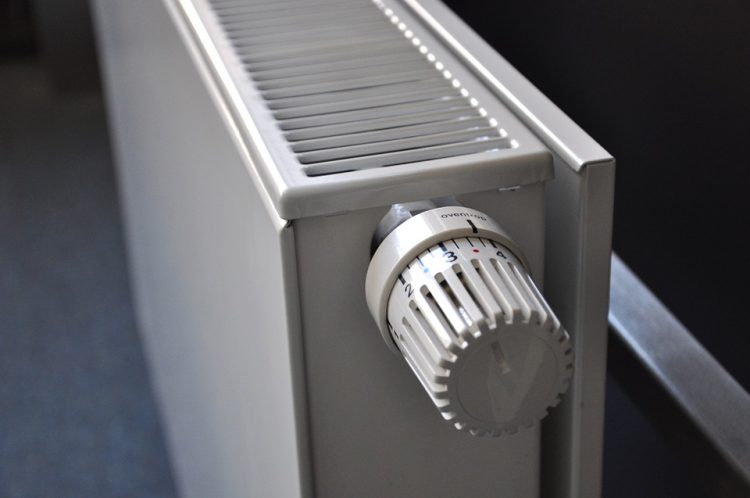Stone wool insulation is an environmentally friendly and sustainable way to insulate your home. Besides retaining heat, stone wool insulation also acts as soundproofing. Curious about the prices and benefits of this durable insulation material? Read all about it in this handy article.
What does stone wool insulation cost?
The average price of stone wool insulation is between £10 and £17 per m². This makes the price of stone wool relatively low compared to pur insulation, for example. The price of stone wool insulation in your home depends, among other things, on its thickness and quality. For example, do you opt for extra fire-resistant stone wool insulation? Then you will pay relatively more. Check out the average prices for stone wool insulation in your home in the table below.
| Type of dwelling | How much insulation material | Average price (including installation and VAT) |
|---|---|---|
| Appartment | 25 m² | £ 250 – £ 450 |
| Tween dwelling | 65 m² | £ 650 – £ 1.100 |
| Duplex | 100 m² | £ 1,000 – £ 1,700 |
| Detached | 150 m² | £ 1,500 – £ 2.600 |
Find the best specialist for your project and get free quotes.
Start

What is stone wool insulation?
Before you choose stone wool as an insulation material in your home, it is good to know what exactly it is. Stone wool is an insulation material made from various types of volcanic rock and is therefore a form of mineral insulation wool. When stone wool is woven together, it creates mats that are perfect for insulating your home. Weaving the stone wool ensures that no airflow is possible through the material. Therefore, it is a perfect insulation material as it keeps cold air out and warm air in. Stone wool boards are made of completely natural materials and are also 100% recyclable.
What will you save with stone wool insulation?
It’s good to know what stone wool insulation costs, but it’s also important to know what it delivers. After all, insulating your home is a good way to save on energy. These savings depend, among other things, on your home and the type of insulation. Check out the average annual savings for stone wool insulation below.
| Type of house | Average annual savings |
|---|---|
| Tween house | £ 260 – £ 300 |
| Corner house | £ 600 – £ 700 |
| Detached | £ 900 – £ 1.000 |
Steen wool insulation compared to other insulation
Steen wool is not the only option for insulating your home. In fact, there are other types of insulation that all have their own qualities. This sometimes makes it difficult to decide which insulation material is best for your home. For instance, how do insulation prices compare and what is the insulation value of Styrofoam? By comparing insulation materials, you can choose the best one for your home. Not decided? The insulation specialist will be happy to advise you. Check out all insulation materials here and see how rock wool insulation compares to other forms of insulation.
| Type of insulation | Gem. cost per m2 | Lambda value* | Advantages | Disadvantages |
|---|---|---|---|---|
| Glaswool | £8 | 0.032 – 0.040 | – Soundproofing – Moisture & mildew resistant – Fireproof – Relatively inexpensive – Environmentally friendly & 100% recyclable |
– Can cause itching and skin irritation – Not suitable for narrow cavity walls |
| Stone wool | £10 | 0.032 – 0.040 | – Highly sound dampening – Moisture & Anti-fungal – Fireproof – Environmentally safe & 100% recyclable |
– Can cause itching and skin irritation – Not suitable for narrow cavity walls |
| EPS | £20 | 0.030 – 0.040 | – Moisture- and anti-fungal – Durable & highly recyclable – Very light in weight |
– Flammable (though fire retardant) – Raw material is a plastic – Inflexible: does not seal corners & seams as well |
| PUR | £25 | 0.022 – 0.028 | – Covers seams & gaps smoothly – Moisture & Mould resistant – High insulation value – Fire retardant |
– Most expensive choice – Contains chemicals, therefore not environmentally friendly – Difficult to remove – Not recyclable |
| PIR | £15 | 0.022 – 0,027 | – Light in weight – High insulation value – Fire retardant – Insensitive to moisture |
– Contains chemicals, therefore not environmentally friendly – Inflexible material – Not recyclable |
The average costs mentioned are only the costs for the material. * The lambda value indicates how well a material conducts heat. Here, the lower the value, the better the insulation.

Installing stone wool insulation: Roadmap
Insulating a house is done in several steps. The process depends on the type of wall you are having insulated with rock wool.
Step 1. Inspection
The first step of insulating your home, is to examine its current condition. The specialist drills small holes in the wall and then inspects the walls. He examines what kind of insulation is already in the wall, whether there is enough space to install stone wool insulation and whether he needs to remove any material from your wall. Is the thickness of the walls OK and is there enough space for the insulation material? Then it is time to apply the stone wool insulation.
Step 2. Insulation
With existing cavity walls, the specialist insulates your home using stone wool insulation flakes which he blows into the cavity wall through small holes. This eliminates the need to break open the walls of your home to install new insulation. Do you want to insulate a new house using stone wool? Then the specialist will work with large rolls or slabs of rock wool. He will attach these to the beams in your cavity walls, floor and roof, insulating your house up to the ridge. Do you want to insulate a pitched roof? Then special pressure-resistant insulation is used, so that the insulation does not build up due to gravity.
Tips for stone wool insulation
Choose easy-to-install insulation wool
The easier it is for the specialist to install stone wool insulation, the lower your final bill will be. Therefore, it is worth investing in stone wool insulation with a so-called nail flange. This is an aluminium layer that holds the wool together and also acts as a vapour barrier. A stone wool insulation roll with this aluminium backing will be slightly pricier, on average £1 extra per square metre.
Extra options for better insulation
The insulation value of stone wool is relatively good, but it can always be improved thanks to some simple adjustments. Of course, these extra options also come at an extra cost, but you will find that your home is better able to retain heat. For example, impregnate your facade to stop moisture, install central heating or install some ventilation grills that allow warm air in on cold days.
| Extra option | Average cost (including labour costs and VAT) |
|---|---|
| Gable impregnation | £ 900 per house |
| Ventilation grids | £ 15 to £ 60 each |
| Central heating | £ 6.000 per dwelling |
| Radiator foil | £ 17 per radiator |
Check whether you are entitled to a subsidy
With a view to sustainability, insulating homes is increasingly important. Therefore, various subsidies for insulation are also available nowadays. For example, the government is reducing VAT on insulation materials for houses older than two years from 21% to 9%. There are also several municipalities that have a special subsidy pot for insulation projects. So, are you insulating your flat roof or do you want to improve the insulation of your cavity walls? If so, always check whether your municipality has a special subsidy for making your home more sustainable, so you will always get the best deal.
Find the best specialist for your project and get free quotes.
Start